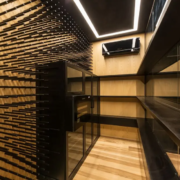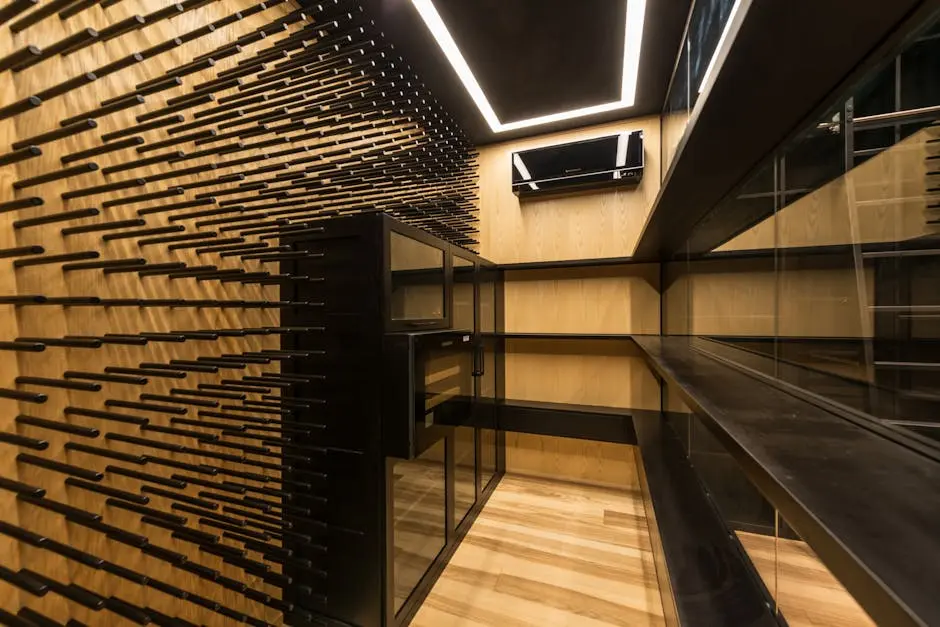Essential Tips for Effective Restaurant Wine Storage
Proper wine storage is crucial for any restaurant looking to maintain the quality of its wine offerings. Not only does effective storage enhance the flavor and aromas of the wine, but it also ensures that your customers enjoy the best experience possible. In this blog, we’ll explore essential tips that every restaurant owner should know about wine storage, from choosing the right environment to organizing your collection efficiently.
Understanding Wine Storage Basics
Before diving into specific tips, it’s important to understand the basic principles of wine storage. Temperature, humidity, light, and vibration are crucial factors that can significantly affect the quality of your wine. Each type of wine has its own unique needs, which is why understanding these fundamentals is not just helpful but essential for your restaurant’s success.
For instance, did you know that red wines often thrive in slightly warmer temperatures than white wines? Knowing this can help you set up a storage system that caters specifically to the different varieties you offer. Additionally, the impact of vibration can’t be understated; even subtle movements can disturb the wine and lead to a less enjoyable experience for your customers.
Choosing the Right Temperature for Wine Storage
Maintaining the ideal temperature for wine is essential. For red wines, an optimal storage temperature typically falls between 55°F and 65°F. Meanwhile, white wines are best preserved at slightly cooler temperatures, around 45°F to 50°F. Understanding these ideal ranges can significantly enhance the quality of the wine served in your establishment.
Temperature fluctuations can be detrimental. Sudden changes can cause the wine to expand and contract, compromising the cork’s seal and allowing oxygen to seep in. To mitigate these risks, consider investing in a wine refrigeration system that offers precise temperature controls, ensuring your wines are stored in a stable environment at all times.
Additionally, it’s valuable to equip your staff with knowledge about the temperature needs of the wines they serve. This not only boosts their confidence but also enhances customer service when they can share this information with passionate wine enthusiasts dining at your restaurant.
The Importance of Humidity Control
Humidity plays a significant role in maintaining the cork’s integrity. Ideally, wine storage should be kept at about 60-70% humidity. Too low humidity can dry out the cork, while too much humidity can promote mold growth and ruin the label. This section will cover the ideal humidity levels and how to achieve and monitor them in a restaurant setting.
A common solution for achieving optimal humidity is using a humidifier or a hygrometer to monitor the levels accurately. Regular checks will help ensure your wine is preserved effectively, and informing your team about the importance of these controls will foster a culture of care around the wine selection.
Ultimately, maintaining the correct humidity isn’t just about protecting your wine; it’s about providing an exceptional experience for your guests. With the right humidity levels, you’ll be more likely to serve wines that are fresh, flavorful, and true to their intended characteristics, making each glass a delight.
Minimizing Light Exposure
Light can spoil wine over time, especially ultraviolet (UV) light, which can break down compounds in wine and lead to a less enjoyable product. Here, we’ll explore effective strategies to minimize light exposure in your storage area, including the use of tinted glass or UV-filtered lighting.
Consider the layout of your wine storage area. If possible, position shelves in shaded areas or line them with materials that reflect light away from the bottles. Even small adjustments can have a lasting impact on the quality of your wine over time.
Furthermore, educating your staff on the importance of keeping wine bottles away from direct light can help preserve your collection’s integrity. This doesn’t just apply to storage but also to service—ensuring that wines are kept in the dark until each bottle is ready to be poured can make a significant difference.
Creating the Right Storage Environment
Discussing the ideal conditions for wine storage is crucial to maintaining quality. Beyond temperature and humidity, consider the positioning of your storage. For example, horizontal storage is often recommended as it keeps the cork moist, preventing it from drying out and allowing air to enter.
Another aspect to focus on is vibration; you want to minimize any disturbances. Avoid placing your wine storage near appliances that generate vibrations, like refrigerators or dishwashers. Additionally, creating a dark, stable environment means you should aim to keep doors closed and limit traffic in your storage areas as much as possible.
Implementing proper shelving is equally important. Use racks that will support your bottles and prevent rolling or falling. Customizable shelving based on your collection can enhance accessibility and protect your investment.
Organizing Your Wine Collection
An organized wine cellar is key to efficiency and accessibility. Tips for categorizing your collection by type, region, or vintage will help staff easily find what they need. Maintaining a clear system reduces confusion during busy service hours and ultimately enhances the customer experience.
For example, consider arranging your bottles in a way that aligns with your menu offerings. If certain wines pair better with specific dishes, keeping those wines in close proximity can be helpful for staff when making recommendations.
Another approach is to maintain a digital inventory. This not only helps track your stock but also provides valuable insights into which wines are popular. Regularly updating this inventory can lead to more efficient ordering and help minimize waste, tailoring your offerings to your customers’ preferences.
Regular Maintenance and Inventory Checks
Routine maintenance is crucial for effective wine storage. This section will outline the importance of regular inventory checks and what to look for during these assessments. A well-maintained stock ensures you are ready to serve your guests well, and it also preserves your investment over time.
Regularly checking for signs of leakage, mold, or spoilage is essential. Additionally, consider scheduling inventory updates at least once a month, reviewing both the physical condition of the bottles and their stock levels. Keeping a close eye on this allows for timely ordering and prevents excess inventory of underperforming wines.
Moreover, involving staff in these checks can create a sense of ownership over the wine program. Empowering team members to take an active role in monitoring the wine storage encourages them to learn more about the wines themselves—transforming your entire service culture around wine into an informed and passionate offering.
Final Thoughts on Wine Storage
By implementing these essential tips for effective restaurant wine storage, you can not only preserve the integrity of your wine but also elevate your restaurant’s reputation. Remember, a well-stored wine is a key ingredient in delivering an exceptional dining experience. Cheers to good wine and great service!



